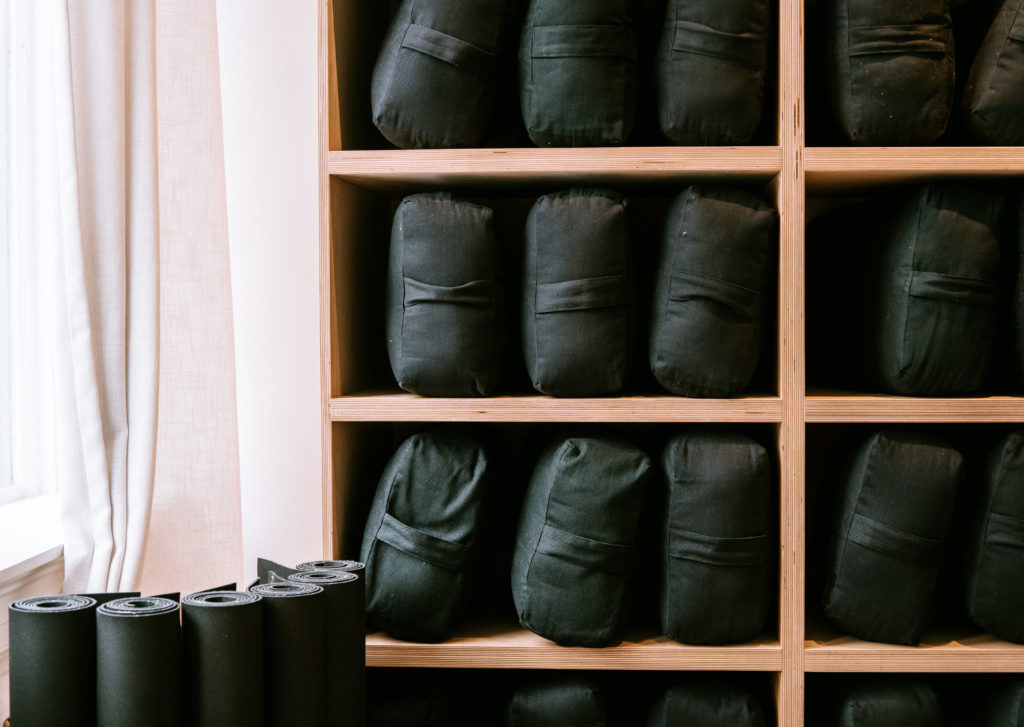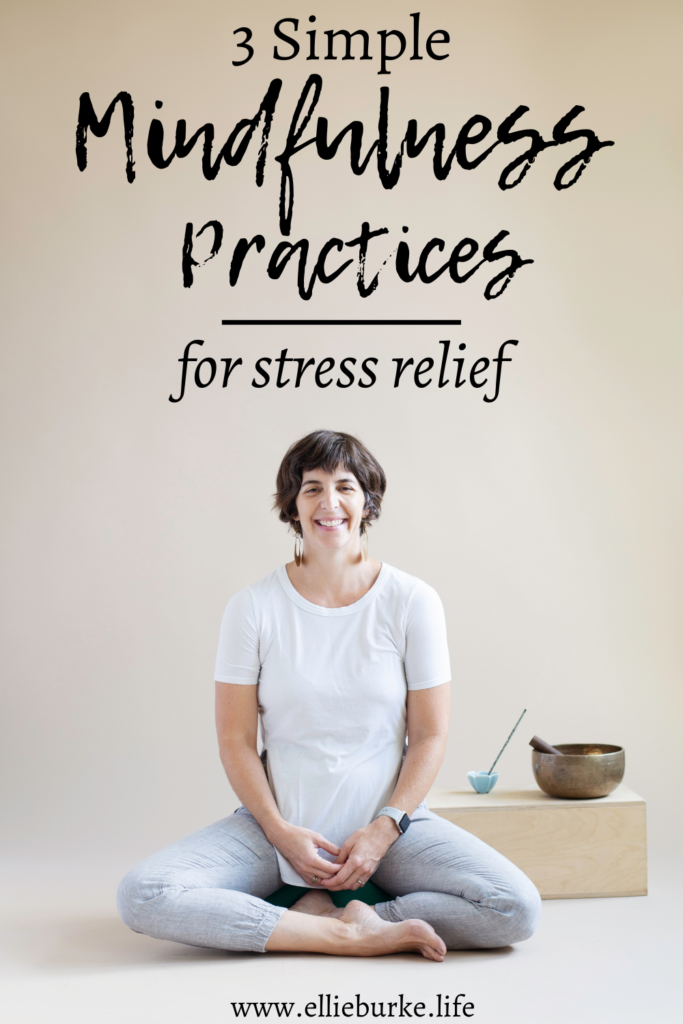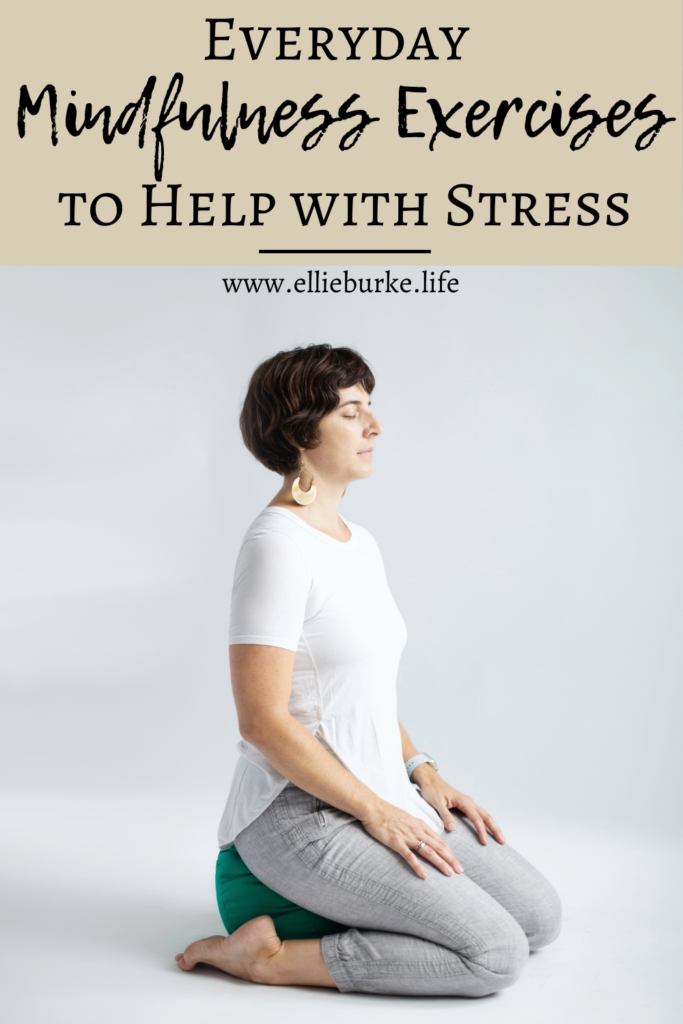Ellie Burke
Everyday Mindfulness Exercises to help with Stress

Mindfulness is a word we hear often these days. But what does it really mean? Mindfulness is the understanding that we are always in the present moment physically but our mind is often not. The mind is generally in one of three places – either thinking about or replaying the past, anticipating or planning for the future, or analyzing, evaluating or contemplating this moment.
Being mindful allows us to come back to the present moment. Allowing ourselves to be “in the moment” relieves those feelings of sadness or inadequacy associated with the past as well as the stress of focusing on the future. This leaves our body and nervous system at peace.
Easier said than done right? Our human nature and societal pressures make it difficult to simply jump right in to the present moment when we’re feeling doubtful, stressed or anxious. However, there are a number of helpful mindfulness exercises that can help us get there. We do, truly, at any moment have the power to come back into our bodies, calm our nervous system and feel peace.
What are mindfulness exercises?
Mindfulness exercises are simply techniques that help us return to the present moment, again and again. When we are fully present, experiencing this moment, rather than thinking about it, we create space between our experiences and what our minds are telling us.
Why are they important?
When what our minds are telling us is stressful and anxiety-inducing or perpetuating, being in the present moment allows us to begin to release that stress and anxiety that is being felt in our bodies. Although as we discussed above, it can be challenging to find peace and calmness when we are experiences difficult emotions. This is where mindfulness exercises come in to play.
Without certain techniques to fall back on, it can be hard to escape a spinning mind and be brought back to the truth- this present moment.
Mindfulness Exercises to Help with Stress
Here are a few everyday mindfulness exercises that can help to support you when you are feeling anxious or stressed out:
Extended Exhale Breathwork
The act of breathing deeply from the diaphragm activates the vagus nerve and our parasympathetic nervous system. This signals to the brain that we are safe, calming the body down and allowing us to feel more at ease. Deep breathing also gets more oxygen to the rational part of the brain and helps manage our stress responses. This decreases racing thoughts and heart rate, fear, and anxiety.
How To Do It
Inhale through the nose for an easeful count of 4; exhale through the nose for an easeful count of 6. Repeat for 5-10 rounds (or, when you have time, feel free to practice for 3-5 minutes!) Remember that your breathing should NOT create more stress or anxiety! So if the 4:6 ratio is too much, drop it back to 3:5 or even 2:4 and then build up as you can.
Extend your exhale so that you fully empty of the breath. This includes a slight drawing in at the diaphragm (below the heart, where the ribcage begin to come together) to activate the vagus nerve, which sends a signal to the brain that everything is okay at this moment. With this type of breathwork, we are slowing down the exhale and completing it.
A great resource for anyone wanting to go deeper on the topic of breathwork is Donna Farhi’s Breathing Book: Good health and Vitality Through Essential Breathwork. I have looked up to Donna for years and admire her approach to bettering lives through yoga, breathwork and movement.
Feel the Support Beneath You
You have likely heard that being “grounded” can help pull you back into the present moment. Being grounded is, in and of itself, the act of being in your present body and feeling connected with the earth beneath you. This is simply another way to calm the mind and signal to your body that you are safe.
How To Do It
Bring your attention in & down to whatever is in contact with the floor/ground and really rest downward into that support. Feel the ground beneath your feet, feel the heaviness of your weight on the ground. Allow yourself to sink in to that support.
This mindfulness exercise allows the nervous system to settle down leaving us feeling calm and centered.
Soothe through the Senses
The goal of this practice is to become aware of things in your environment and how they are affecting you. And though we cannot control much of what is outside of ourselves, we can make conscious choices about what we include or exclude. What supports us and what doesn’t.
When we are feeling stressed, we are often being pulled into a habitual reaction. One that tends to focus on negative feelings and emotions such as fear and doubt. When this happens you can soothe your senses (sight, smell, sound) with material that nourishes and replenishes rather than what drains and depletes.
How To Do It
First, begin to notice how you feel when consuming certain material. What you are listening to, what you are reading, what you are seeing, who you are spending time with, what you are eating/drinking. What things leave you feeling nourished, fulfilled? Which things leave you feeling exhausted, agitated?
When you begin to realize the impact that these different things have on you, you begin to understand the cumulative effect that many of these smaller choices have over time – either for the positive or negative.
When you begin to feel stressed, remember what sensory experiences were supportive and nourishing. Put on some good music or a podcast with that positive quality, get up and go outside and feel the air and hear the sounds, use essential oils. Changing our momentary experience can break up that heavy stressful energy by bringing us back to what is true in this moment which can only be sensed. This allows us to think more clearly as well, as opposed to thinking and making decisions from a fear-based state.
Try including more of the sensory experiences that support you and nourish you on a regular basis. Not just in moments of stress!
Another great addition to help with stress, yoga- read more on what is yoga, anyway?
With love,
Ellie
Love this post? Pin it for later!
May 28, 2021


Comments